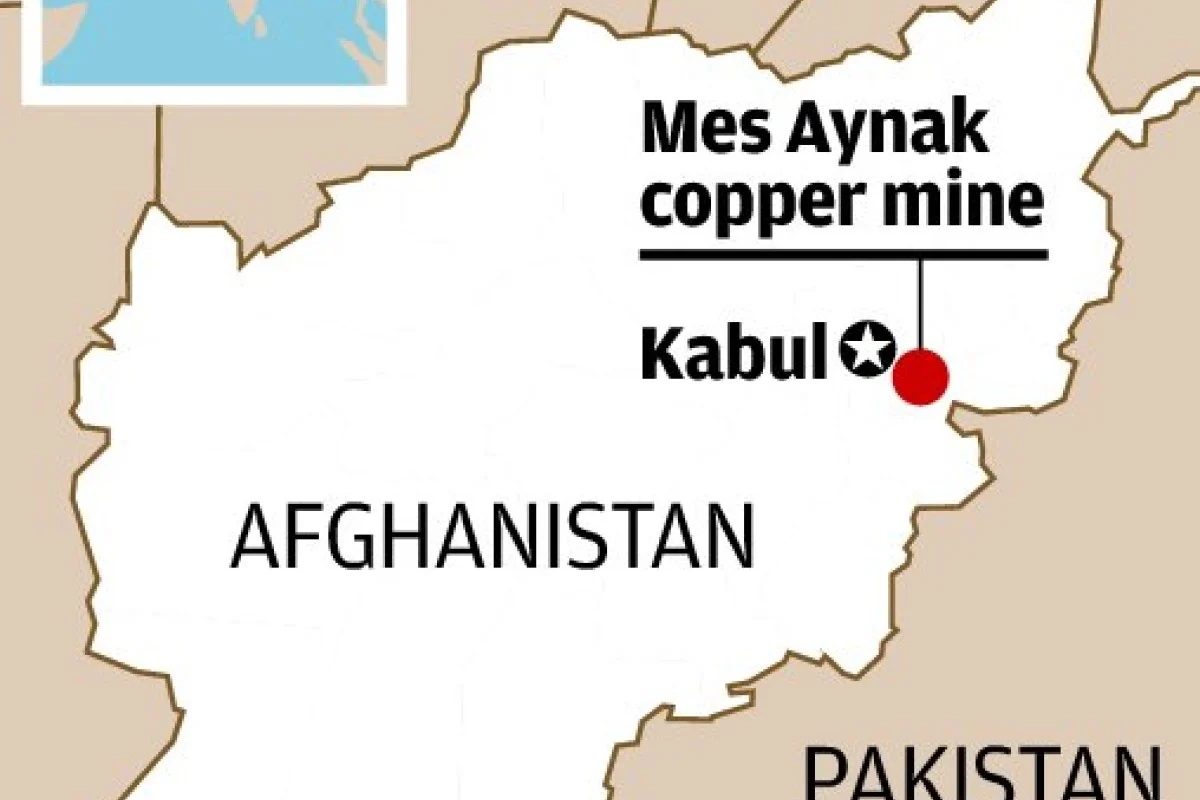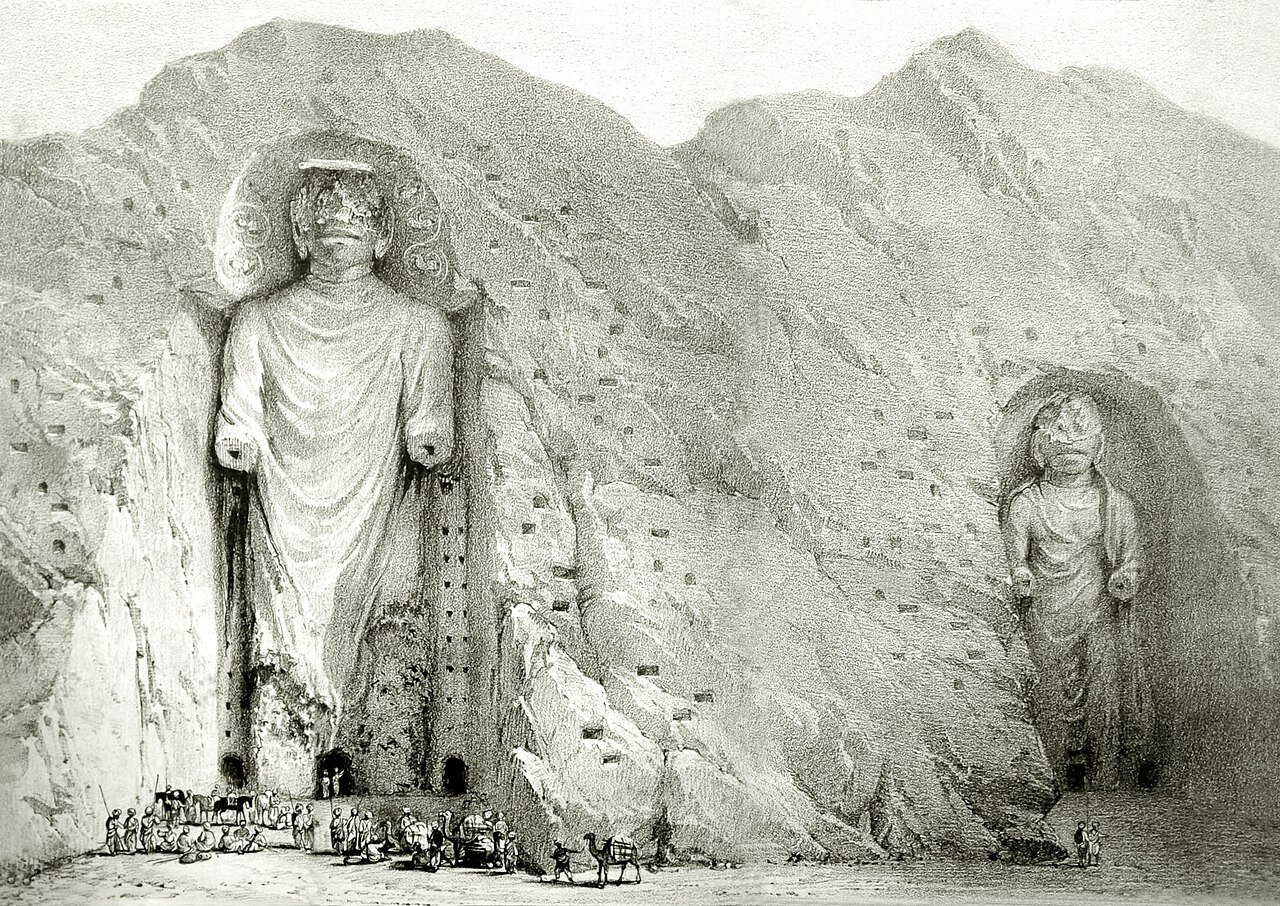Indian Heritage & Culture
Bamiyan Buddhas
- 31 Mar 2022
- 9 min read
For Prelims: Bamiyan Buddhas, Buddha, Hindu Kush.
For Mains: Significance of Buddhism, Indian Heritage Sites, Indian Literature.
Why in News?
Recently, the Taliban regime in Afghanistan has said it would protect the ancient Buddha statues in Mes Aynak.
- Mes Aynak is also the site of a copper mine where the Taliban are hoping for Chinese investment.
- The Taliban’s position is in marked contrast to the time they ruled Afghanistan earlier, when, in the face of global outrage, they brought down the centuries-old Buddha statues in Bamiyan using artillery, explosives, and rockets.
What is Background of Taliban’s Destruction of Bamiyan?
- The hardline Taliban movement, which emerged in the early 1990s, was in control of almost 90% of Afghanistan by the end of the decade.
- While their governance supposedly curbed lawlessness, they also introduced so-called “Islamic punishments'' and a regressive idea of Islamic practices, which included banning television, public executions, and lack of schooling for girls aged 10 and above.
- The destruction of the Bamiyan Buddhas was part of this extremist culture.
- On 27th February 2001, the Taliban declared its intention to destroy the statues.
What is the Status After Destruction?
- In 2003, UNESCO included the remains of the Bamiyan Buddhas in its list of world heritage sites.
- On 9th March 2021, the statue of Salsal was “recreated” — a 3D projection was beamed at the corner where it had stood.
What are Bamiyan Buddhas?
- Legacy of the Bamiyan Buddhas:
- The Bamiyan Buddha statues, cut from sandstone cliffs, are said to have dated back to the 5th century AD, and were once the tallest standing Buddhas in the world.
- In their Roman draperies and with two different mudras, the statues were great examples of a confluence of Gupta, Sassanian and Hellenistic artistic styles.
- Called Salsal and Shamama by the locals, they rose to heights of 55 and 38 metres respectively.
- Salsal means “light shines through the universe”, while Shamama is “Queen Mother”.
- The Bamiyan Buddha statues, cut from sandstone cliffs, are said to have dated back to the 5th century AD, and were once the tallest standing Buddhas in the world.
- Significance:
- Bamiyan is situated in the high mountains of the Hindu Kush in the central highlands of Afghanistan.
- The valley, which is set along the line of the Bamiyan River, was once integral to the early days of the Silk Roads, providing passage for not just merchants, but also culture, religion and language.
- When the Buddhist Kushan Empire spread, acting as a crucible of sorts, Bamiyan became a major trade, cultural and religious centre. As China, India and Rome sought passage through Bamiyan, the Kushans were able to develop a syncretic culture.
- In the rapid spread of Buddhism between the 1st to 5th centuries AD, Bamiyan’s landscape reflected the faith, especially its monastic qualities.
- The two colossal Buddhas were only a part of several other structures, such as stupas, smaller seated and standing Buddhas, and wall paintings in caves, spread in and around surrounding valleys.
What are the key Facts about Buddhism?
- Buddhism is 2,500 years old.
- It is one of the important religions of South and South-Eastern Asian countries.
- Buddhism arose as a result of Siddhartha Gautama's quest for Enlightenment in around the 6th Century BC.
- There is no belief in a personal God. It is not centred on the relationship between humanity and God.
- Buddhists believe that nothing is fixed or permanent - change is always possible.
- The two main Buddhist sects are Theravada Buddhism and Mahayana Buddhism, but there are many more.
- The path to Enlightenment is through the practice and development of morality, meditation and wisdom.
- The religion is based upon the teachings, life experiences of its founder Siddhartha Gautam, born in circa 563 BCE.
- He was born into the royal family of the Sakya clan who ruled from Kapilvastu, in Lumbini which is situated near the Indo-Nepal Border.
- At the age of 29, Gautama left home and rejected his life of riches and embraced a lifestyle of asceticism, or extreme self-discipline.
- After 49 consecutive days of meditation, Gautama attained Bodhi (enlightenment) under a pipal tree at Bodhgaya a village in Bihar.
- Buddha gave his first sermon in the village of Sarnath, near the city of Benares in UP. This event is known as Dharma-Chakra-Pravartana (turning of the wheel of law).
- He died at the age of 80 in 483 BCE at a place called Kushinagara, a town in UP. The event is known as Mahaparinibban.
UPSC Civil Services Examination, Previous Year Questions (PYQs)
Q. With reference to Indian history, who among the following is a future Buddha, yet to come to save the world? (2018)
(a) Avalokiteshvara
(b) Lokesvara
(c) Maitreya
(d) Padmapani
Ans: (c)
Exp:
- According to Buddhist history and tradition, Maitreya Buddha is believed to be a Bodhisattva, who will appear on the Earth in the future, will achieve Nirvana and will teach the people of Earth the pure Dharma just like Shakyamuni Buddha did.
Q. Which one of the following describes best the concept of Nirvana in Buddhism? (2013)
(a) The extinction of the flame of desire
(b) The complete annihilation of self
(c) A state of bliss and rest
(d) A mental stage beyond all comprehension
Ans: (a)
- Roughly translated, Nirvana means “to snuff out”, in the way one extinguishes a fire of desire.
- In Buddhism, Nirvana has no negative connotations, rather it means moving to another plane of existence by extinguishing the flames of desire, delusion, anger and hatred.
Q. Lord Buddha’s image is sometimes shown with the hand gesture called ‘Bhumisparsha Mudra’. It symbolizes (2012)
(a) Buddha’s calling of the Earth to watch over Mara and to prevent Mara from disturbing his meditation
(b) Buddha’s calling of the Earth to witness his purity and chastity despite the temptations of Mara
(c) Buddha’s reminder to his followers that they all arise from the Earth and finally dissolve into the Earth, and thus this life is transitory
(d) Both the statements (a) and (b) are correct in this context
Ans: (b)
- Lord Buddha in Bhumisparsha Mudra is seen seated with his right hand as a pendant over the right knee, reaching toward the ground with the palm inward while touching the lotus throne. In the meantime, the left hand can be seen with the palm upright in his lap.
- This gesture (Mudra) represents the moment of the Buddha’s awakening as he claims the Earth as the witness of his victory over demon king Mara and enlightenment.








